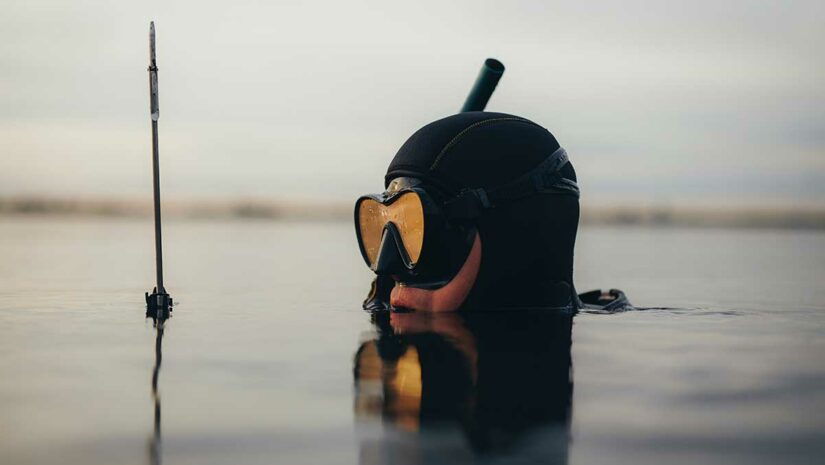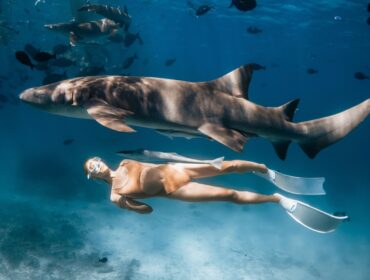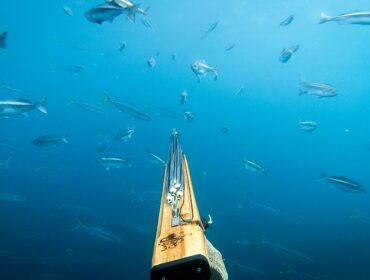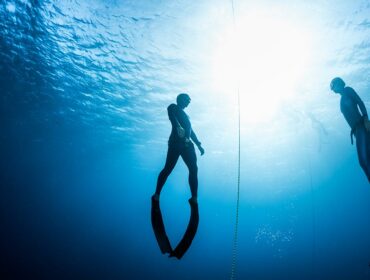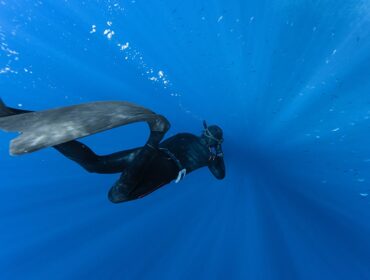Spearfishing is an exciting and fulfilling underwater activity that allows you to harvest fish using a spear while exploring the depths of the ocean. It requires skill, precision, and knowledge of marine ecosystems. To engage in this sport safely and effectively, it is crucial to have the right spearfishing equipment. Masks, in particular, serve to provide visibility and prevent water from entering your eyes, allowing you to focus on your surroundings and potential prey. In this article, we will delve into the world of masks for spearfishing, discussing their importance, key features, types, maintenance, and safety considerations.
Difference Between Diving and Spearfishing Mask
Before we delve into different types of spearfishing masks, understanding the distinction between general scuba diving masks and spearfishing masks can help you pick the right mask for your needs and also significantly enhance your underwater hunting experience.
Low Volume Design:
Spearfishing Masks
When we talk about a “low volume” mask in the context of spearfishing and freediving masks, we’re referring to a mask that has a smaller amount of air space between your face and the lenses. In other words, it’s how much air is trapped inside when you’re wearing it.
Benefits of Low Volume Spearfishing Masks
Easier Equalization
As you dive deeper underwater, the pressure increases, and this presses on the mask, creating a need to equalize the air inside. With a low volume spearfishing mask, there’s less air space to equalize, making the process easier and more efficient. You equalize by exhaling slightly through your nose into the mask, balancing the pressure.
Saves Oxygen
When equalizing a larger volume mask, you’d use more oxygen. Since spearfishers often free-dive (meaning they’re not using tanks and are holding their breath), conserving oxygen is critical. The less oxygen you use for tasks like equalization, the longer you can stay submerged and focus on the hunt.
Clearer Vision
A low volume mask brings the lenses closer to your eyes, giving you a wider field of view. This is particularly beneficial in spearfishing where you want to spot your target fish from different angles.
More Streamlined
Low volume masks tend to have a sleeker design which reduces drag when swimming, making it easier to move through the water.
Diving Masks
These can be a bit bulkier with a medium to high volume. The added space might not be an issue when you’re leisurely exploring and have a regular air supply.
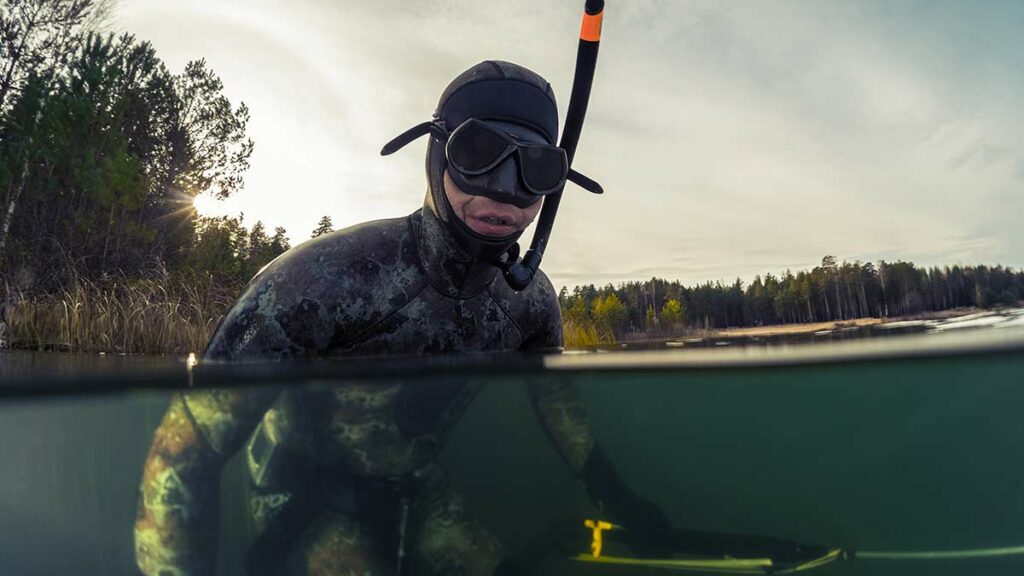
Field of Vision
Spearfishing Masks
For spearos, the aim is precision. Spearfishing masks eliminate side windows to offer a narrowed, direct line of sight, ensuring you zero in on the prey. The absence of side windows also means reduced reflections, keeping fish at ease and unaware of your presence.
Diving Masks
These generally provide a broad field of vision. Many diving masks come with side windows or larger lenses to let divers enjoy the panoramic underwater sights – from coral reefs to shipwrecks.
Color & Reflection
Spearfishing Masks
Stealth and subtlety are crucial. Spearos often lean towards darker or camouflaged masks to remain unnoticed by their underwater prey. Darker skirts, especially black ones, also minimize internal reflections, providing a clearer view of the target.
Diving Masks
Available in a variety of colors, divers can choose based on personal preference without it impacting their activity.
Fit & Comfort
Spearfishing Masks
The focus here is on a snug fit to ensure no water enters the mask during rapid movements or when lining up for a shot. While still comfortable, the emphasis is on performance during those crucial moments of spearfishing action.
Diving Masks
While fit is essential for both types, diving masks often offer a bit more leeway in terms of comfort over long durations. These are designed for divers who might be underwater for extended periods.

Types of Spearfishing Masks and their Features:
By understanding the unique features and benefits of spearfishing masks, you’ll be prepared to make an informed decision that is tailored to your needs.
Type
Single Lens Mask
As the name suggests, single lens mask has one lens that goes over the entire width of the mask covering both the eyes, without any interruptions in the cut. It offers an unobstructed view without a separating frame down the middle.
- Clear Vision: One big piece of glass means there’s no bridge in the center to potentially obstruct your view. You get a broad, unobstructed panoramic view which can be awesome when trying to spot that elusive fish.
- Larger Volume: Single lens masks often have a slightly larger internal volume. This means a bit more air inside, which can be a factor when you’re diving deep and need to equalize the pressure inside your mask.
- Fit: Because there’s one continuous piece of glass, the frame design might be a bit broader. Depending on your face shape, this could either be a perfect fit or a bit too roomy.
- Blue Water Hunting: The continuous glass design might provide a broader view and aid in depth perception, which can be beneficial when you’re scanning the vast open waters and targeting fish at a greater distance.
Dual Lens
These masks have two lenses, divided by a nose bridge. Great for divers who need prescription lenses as it can be customized to suit your vision needs.
- Flexibility: Because there are two separate lenses, split lens masks often flex a bit more to fit your face. This might mean a snugger fit for some spearos.
- Focus: Sometimes, the bridge in the middle can help with focus, especially if you’re trying to zoom in on a particular spot. Dual lens tend to be a bit tilted towards the face, giving better vision clarity and fit.
- Nose Access: This might seem like a tiny detail, but the split often gives you better access to pinch your nose – a necessary move when equalizing your ears during a dive.
- Reef Hunting: With split lens designs, some divers feel they have better side-to-side vision. When you’re hunting close to a reef, this can be handy to catch those sneaky fish darting in and out of nooks and crannies.
Material
Tempered Glass Masks
- Clarity: Tempered glass is the gold standard when it comes to optical clarity. It allows you to see everything crisply and doesn’t yellow with age.
- Durability: The “tempering” process makes the glass more resistant to scratches and unexpected impacts. If it ever breaks (which is rare), it shatters into small, granular chunks, reducing the risk of injury.
- Price: Typically, tempered glass masks will be a bit more expensive than their plastic counterparts. But hey, for the sharpness and durability, many feel it’s worth the extra bucks!
- Weight: These masks are slightly heavier than plastic ones, but this is often seen as an advantage because it helps the mask stay in place, especially when diving deeper.
Plastic (Polycarbonate) Masks
- Clarity: Plastic lenses won’t match the optical clarity of tempered glass. Over time, they might become cloudy or yellowish, affecting your view.
- Durability: Polycarbonate is shatterproof, which means even under extreme pressure, it won’t crack or break. However, they can scratch more easily than tempered glass.
- Price: Typically more affordable, making them a go-to choice for beginners or those on a tight budget.
- Weight: These masks are lighter, which some folks find more comfortable, especially during prolonged use.
Lens
Clear Lenses
- Natural Lighting: With clear lenses, you get to experience the underwater realm in its most natural state. The colors are authentic, and the visibility is generally excellent, especially in well-lit conditions.
- Low-Light Buddy: If you’re diving in murky waters, during dawn or dusk, or in depths where sunlight struggles to reach, clear lenses can be advantageous. They won’t darken your view further.
- Beginner-Friendly: For those new to spearfishing or diving, clear lenses might be more comfortable since they provide a familiar view similar to our everyday vision.
Tinted Lenses
- Reduced Glare: Just like your favorite pair of sunglasses, tinted lenses reduce glare from the sun. This can be super helpful when hunting near the surface or in very sunny conditions. However, if you are diving in murky waters the visibility can be affected.
- Enhanced Contrast: Certain tints can enhance the contrast of your underwater view. For instance, amber or yellow tints can make prey pop against a blue background, giving you a visual edge in spotting them.
- Eye Fatigue Reduction: Prolonged exposure to bright underwater environments might strain your eyes. Tinted lenses can help reduce this fatigue by filtering out certain light spectrums.
- Psychological Effect: Believe it or not, there’s a little mind game going on too. Some spearfishers feel stealthier and more concealed with tinted lenses, believing that fish can’t see their eyes and hence are less spooked.

Frame vs Frameless
Frameless
A majority of spearfishing masks are frameless. The lens is directly molded to the skirt, making it more compact. Sitting closer to the face, they provide a broader field of vision, vital for spotting and tracking prey. Additionally, their sleek design ensures minimal drag and resistance while moving underwater.
Frame
These have a solid frame holding the lens (es) and skirt together. While they can be a tad bulky, they’re often more durable.
Skirt
The skirt is the part that ensures a watertight seal on your face. High-quality silicone skirts are soft and their durability ensures long-lasting performance.
Black or dark-colored skirts are a spearfisherman’s best friend. They block out unwanted reflections and glares, enhancing your hunting prowess.
Strap Types
Classic Silicone Strap
Made from soft and flexible silicone, it’s designed to contour comfortably around the back of your head. Silicone is long-lasting and resistant to the effects of saltwater and sunlight. They usually come with adjustable buckles to ensure a snug fit. However, it can sometimes pull or tangle longer hair.
Neoprene Strap Cover
Neoprene covers slide over your existing silicone strap, providing a cushioned layer. It’s a game-changer for those with longer hair – no more tangles or pulls! They often come in fun colors and patterns, so you can add a splash of personality to your gear.
Wide Split Strap
This design features a wider strap that splits into two thinner sections, distributing the pressure across a larger area of your head. The split design ensures the mask sits securely, reducing the chance of it shifting or coming loose. It offers great stability, especially for deeper dives.
Elastic Band Strap
Made from materials similar to bungee cords, they offer a good stretch and automatically adjust to your head size. They are easy to put on and take off, even with gloves.
Spearfishing Masks with Go Pro mounts:
These masks come equipped with a built-in mount specifically designed for attaching a GoPro or other action cameras. This makes it easy to record your underwater hunting totally hands free!
Best Spearfishing Masks
Salvimar Goblin Mask
Mares Viper Mask
Cressi Metis Spearfishing Mask
Oceanic Predator Mask
Riffe Frameless Mask
Spearfishing Mask Fit Guide
The Initial Fit Test: The Suction Test
- Start by placing the mask onto your face without pulling the strap over your head.
- Take a deep breath through your nose and hold it. Now, gently press the mask to your face.
- Let go! If the mask sticks, even for a few moments, that’s a good indication of a potential seal. If it falls off immediately, it might not be the right fit.
- You should also bring a snorkel and put it in your mouth. Doing so lifts your upper lip, and if the mask isn’t a great fit, you might just notice a break in the seal.
Check for Pressure Points:
- With the mask pressed against your face, feel for any gaps or areas where the mask feels unusually tight. It should sit comfortably without pressing too hard on any particular spot.
Strap Placement:
- The mask strap should sit high on the back of your head, above your ears. This keeps the mask securely in place and prevents it from tilting.
Adjusting the Strap:
- While many folks are tempted to tighten the strap for a ‘better fit’, a mask should seal primarily because of its shape, not because it’s being pressed hard against your face.
- Adjust the strap so it’s snug but comfortable. If you find yourself with red marks or discomfort after only a short time, it’s too tight!
Facial Hair Dilemma:
- A beard or mustache can make achieving a good seal a bit challenging. If you sport facial hair, you might need to apply a bit of silicone-based lubricant or vaseline to aid the seal.
Clearing Your Mask:
- Even with the perfect fit, water can sometimes sneak in. Practice the art of mask clearing: exhale gently through your nose while looking upwards. This will push any water out from the bottom of the mask.
Spearfishing Mask Maintenance
- Defogging: Use commercial defoggers or a simple solution of baby shampoo and water to prevent your mask from fogging up.
- Rinsing: Always rinse your gear with fresh water after each use. Salt and chlorine can degrade silicone and other materials over time.
- Storage: Store your mask and snorkel in a cool, dry place, away from direct sunlight.
Conclusion
The right underwater hunting mask can elevate your spearfishing adventures, making them more enjoyable and fruitful. By understanding the unique requirements of spearfishing and being informed about the features to look for, you can ensure that you select the perfect spearfishing gear. So, the next time you hit the waters, make sure you’re equipped with the best to make every dive count. Dive safe and happy hunting!

